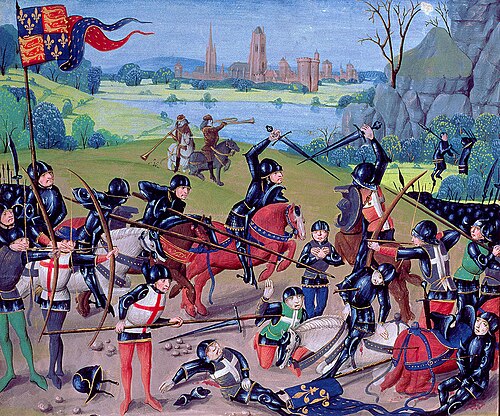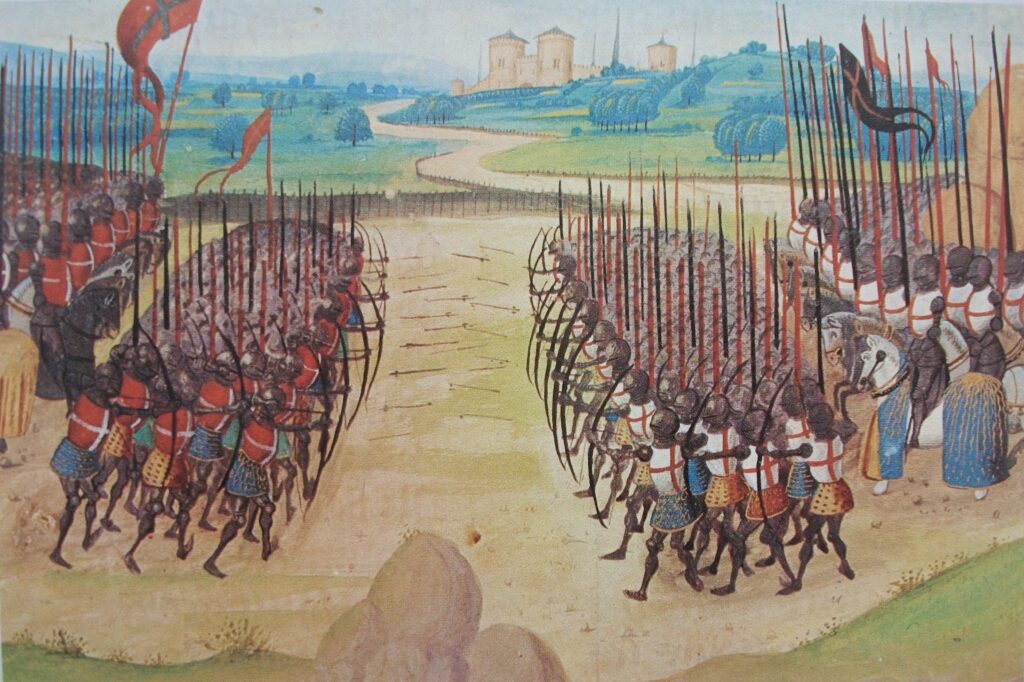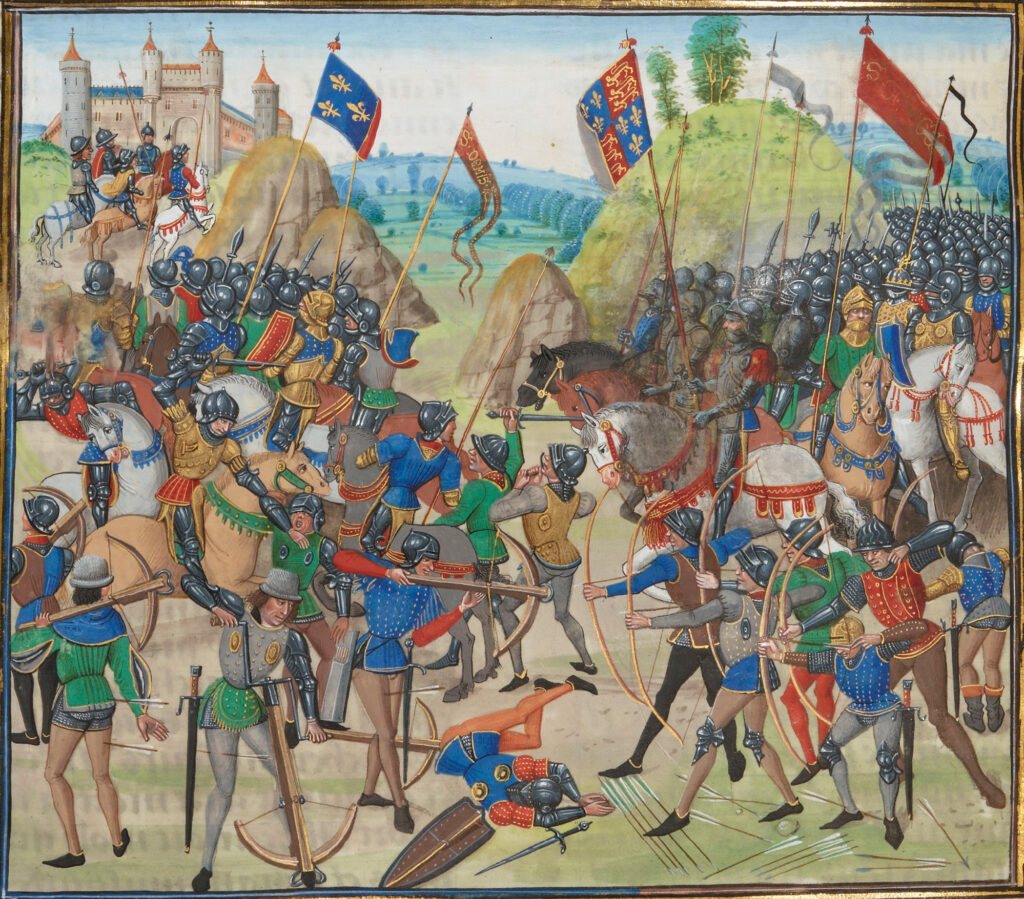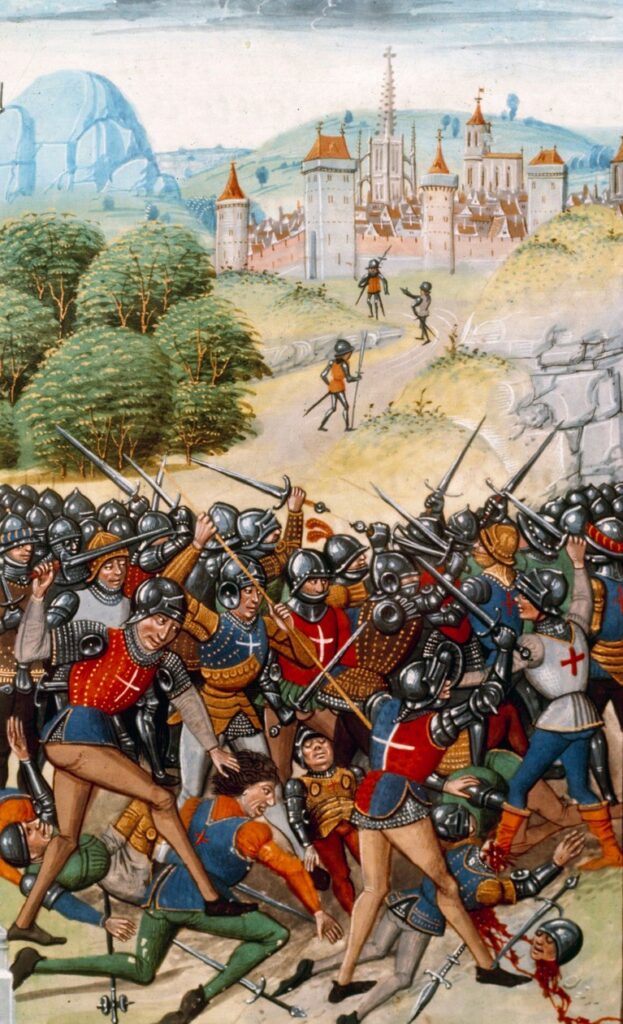The Hundred Years’ War: A Century of Blood, Power, and Nation-Building

The Hundred Years’ War (1337–1453) was not a single continuous conflict, but rather a series of intermittent wars and truces fought between England and France. Over the course of 116 years, five generations of kings and nobles waged battles over dynastic claims, territorial disputes, and national identity. What began as a feud over rightful succession evolved into one of the most transformative wars in European history—shaping monarchies, weaponry, and the very concept of a nation.
This is the full story of the war that gave rise to modern France and England, produced iconic figures like Joan of Arc, and redefined medieval warfare.
1. Background: What Caused the Hundred Years’ War?
The origins of the war were rooted in a mix of dynastic rivalry, feudal complexity, and national ambition.
Key Causes:
- Disputed French Succession (1328): When French King Charles IV died without a male heir, Edward III of England, his nephew, claimed the French throne through his mother (Charles’s sister). The French rejected this claim under Salic Law (which barred inheritance through the female line) and crowned Philip VI of Valois instead.
- English Holdings in France: England still controlled large swaths of territory in France—most notably Gascony—dating back to the Norman Conquest. French kings resented this and sought to reclaim them.
- Economic Interests: Control of wealthy French regions (like Flanders, vital for the wool trade) gave both sides economic motives.
- Feudal Tensions: As the Duke of Aquitaine, the English king was a vassal of the French king—an awkward, unstable power dynamic.

2. The War Begins (1337–1360): The Edwardian Phase
In 1337, Edward III formally claimed the French crown. The war began with naval engagements and raids along the French coast.
Major Events:
- Battle of Sluys (1340): England destroyed the French navy, establishing maritime dominance.
- Battle of Crécy (1346): Edward III’s longbowmen decimated a much larger French force, introducing the effectiveness of longbow warfare.
- Siege of Calais (1347): England captured Calais and held it as a key continental stronghold until 1558.
- Black Death (1347–1351): The plague ravaged Europe, pausing the war and killing millions.
- Battle of Poitiers (1356): Edward’s son, the Black Prince, captured the French king John II, leading to the Treaty of Brétigny (1360). England gained territory but renounced its claim to the throne (temporarily).
3. Renewed Fighting (1369–1389): The Caroline Phase
Under Charles V of France, the French began reclaiming lost lands using guerilla tactics and avoiding large battles.
Key Developments:
- Du Guesclin’s Strategy: The French general Bertrand du Guesclin used hit-and-run tactics and avoided direct engagement.
- Reclaiming Territories: France retook much of Aquitaine and reduced English holdings to a fraction of their former size.
- Internal Problems in England: Political strife, economic hardship, and peasant revolts (like the 1381 Peasants’ Revolt) weakened English resolve.
This phase ended with a truce, as both kingdoms were exhausted and distracted by domestic issues.
4. A New Generation (1415–1429): The Lancastrian Phase
The war reignited under Henry V of England, who resumed his claim to the French throne with dramatic success.
Key Moments:
- Battle of Agincourt (1415): A vastly outnumbered English army defeated the French nobility in one of history’s most famous battles. Again, the longbow played a crucial role.
- Treaty of Troyes (1420): Recognized Henry V as heir to the French throne, disinheriting the dauphin (Charles VII). Henry married Catherine of Valois, daughter of Charles VI.
- Henry V’s Death (1422): Both Henry and Charles VI died in the same year. Infant Henry VI was crowned king of both England and France—but his claim was weakly enforced.

5. Joan of Arc and the Turning Tide (1429–1453)
In France’s darkest hour, a teenage peasant girl named Joan of Arc changed the course of history.
Joan’s Role:
- Claimed to be guided by divine visions to support Charles VII and drive out the English.
- Led the Siege of Orléans (1429) to victory—a major turning point.
- Accompanied Charles to Reims for his coronation, bolstering his legitimacy.
- Captured by the Burgundians, handed to the English, and executed for heresy in 1431.
Though martyred, Joan’s influence galvanized the French cause.
The End of the War:
- French Revival: Under Charles VII, the French reorganized their army and used gunpowder artillery effectively.
- Battle of Castillon (1453): The final major battle; France crushed English forces, ending the war.
- England retained only Calais on the continent (until 1558).
6. Key Figures
- Edward III (England): Initiated the war with his claim to the throne.
- The Black Prince: His victories at Poitiers and Crécy became legendary.
- Henry V (England): Won Agincourt; symbol of English military might.
- Charles V (France): Revived French fortunes in the Caroline phase.
- Joan of Arc: Symbol of French resistance and sainthood.
- Charles VII (France): Oversaw France’s resurgence and final victory.
7. Lasting Impacts of the Hundred Years’ War
Though seemingly a feud over royal titles, the Hundred Years’ War reshaped medieval Europe in profound ways.
Political Impact:
- Rise of National Identity: People began seeing themselves as English or French, not just as subjects of a lord or king.
- Decline of Feudalism: Professional standing armies began replacing feudal levies.
- Strengthened Monarchies: Especially in France, where the Valois dynasty consolidated power.
Military Innovations:
- The longbow proved superior to cavalry-based warfare.
- Gunpowder artillery became crucial in sieges.
- The age of chivalric warfare was ending.
Social and Cultural Effects:
- Massive population loss from war and plague.
- Destruction of the French countryside.
- Propaganda and literature shaped national memory (e.g., Shakespeare’s Henry V).

Conclusion: From Feud to Foundation
The Hundred Years’ War began as a dynastic quarrel but ended as a catalyst for modern statehood, military transformation, and national consciousness. England’s ambitions on the continent were dashed, but it began turning inward—setting the stage for the Wars of the Roses. France, meanwhile, emerged battered but unified.
From the muddy fields of Agincourt to the fiery execution of Joan of Arc, the war’s stories still echo through the annals of Western history, reminding us how conflict—however long—can shape nations for centuries to come.




